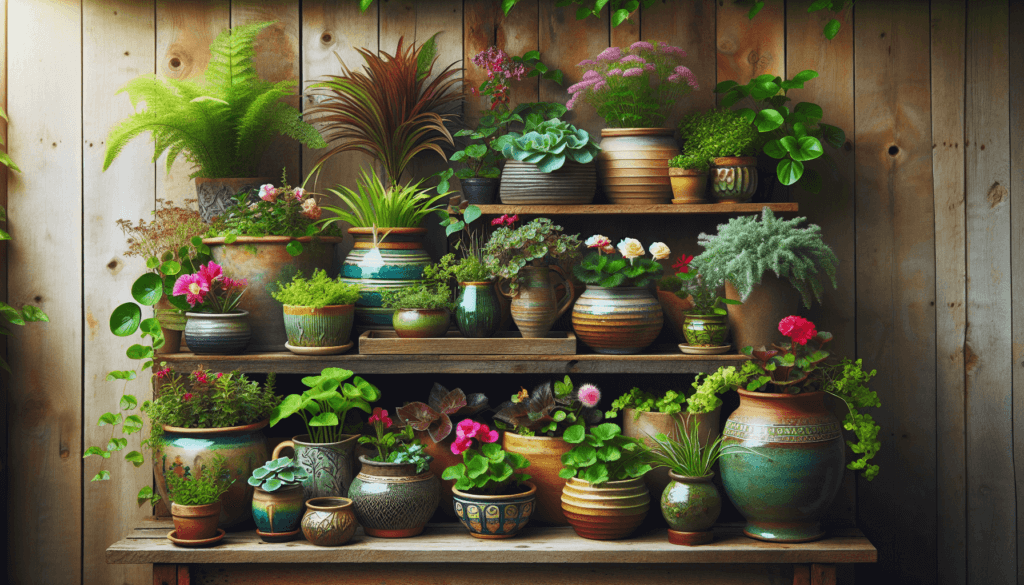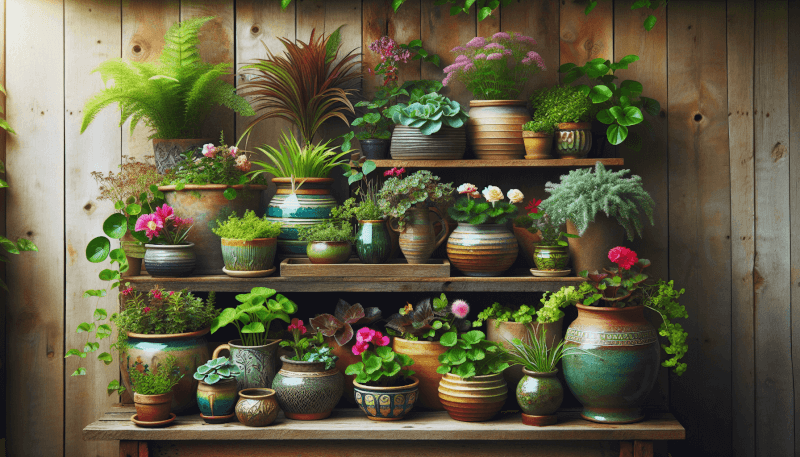If you’re looking to add some greenery and beauty to your home but don’t have the luxury of a sprawling garden, fear not! DIY container gardening is the perfect solution for you. Whether you have a small balcony, rooftop, or simply want to brighten up your indoor space, container gardening allows you to create a mini oasis with minimal effort. In this article, we will explore the most popular plants for DIY container gardening, making it easier than ever for you to bring nature’s touch right to your doorstep.
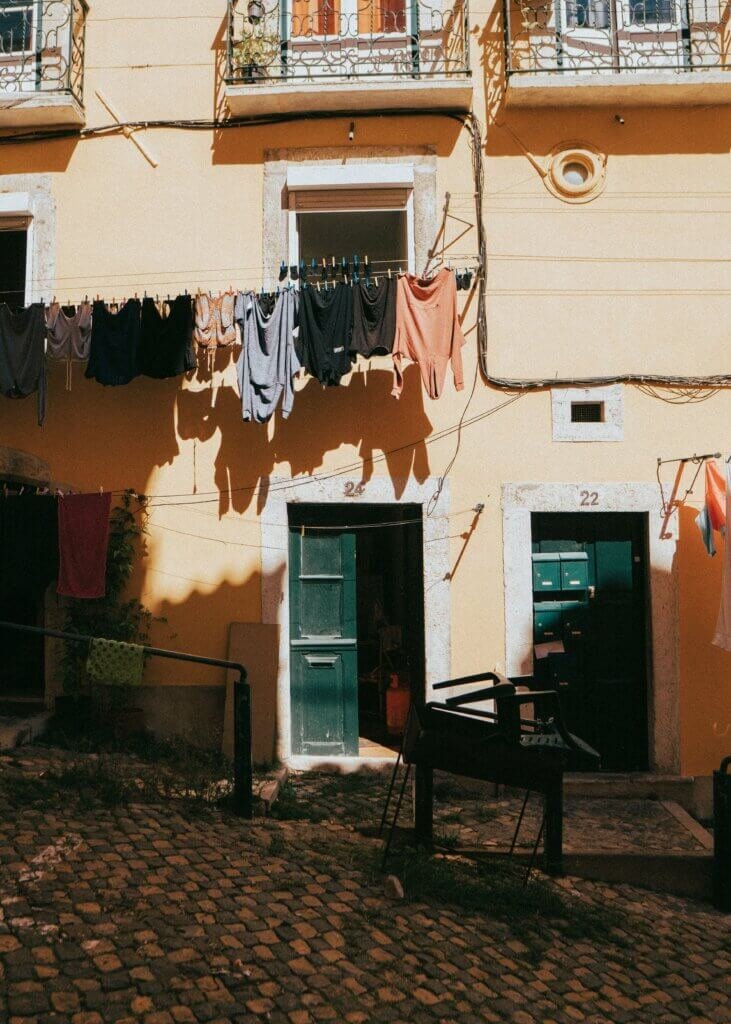
1. Succulents
Succulents are a popular choice for container gardening due to their unique appearance and low maintenance requirements. There are a wide variety of succulents to choose from, each with its own distinct characteristics. Some popular succulents for container gardening include Echeveria, Sedum, Aloe Vera, and Crassula. These plants come in various shapes, sizes, and colors, allowing you to create visually appealing arrangements in your containers.
One of the main benefits of growing succulents in containers is their ability to thrive in different environments. Succulents are known for their water storage capabilities, which allow them to survive in arid conditions. This makes them ideal for container gardening, as they can withstand periods of drought and low water availability. Additionally, succulents have shallow root systems, making them well-suited for smaller containers.
When it comes to growing succulents in containers, there are a few tips to keep in mind. First, choose a well-draining potting mix specifically designed for succulents. This will help prevent waterlogged soil, which can lead to root rot. Ensure that your containers have drainage holes to allow excess water to escape. Sunlight is crucial for succulents, so place your containers in a sunny spot, such as a windowsill or patio.
2. Herbs
Herbs are another popular choice for container gardening, as they are not only useful in the kitchen but also add beauty and fragrance to your outdoor space. There is a wide range of common herbs that are suitable for growing in containers, including basil, rosemary, thyme, and mint. These herbs are known for their versatility in cooking and can be easily incorporated into a variety of dishes.
Proper care is essential when it comes to herb containers. First, choose a container that is large enough to accommodate the herb’s root system and allows for proper drainage. Use a quality potting mix that is rich in organic matter and provides good drainage. Herbs generally prefer full sun, so place your containers in a location that receives at least six to eight hours of direct sunlight.
One creative use for herbs in container gardening is planting them in mixed arrangements with other plants. For example, you can create a Mediterranean-inspired container garden by combining herbs like rosemary, thyme, and oregano with colorful flowers such as lavender and marigolds. This not only adds visual interest but also allows you to have fresh herbs and vibrant blooms in the same container.
3. Tomatoes
Growing tomatoes in containers is a popular option for those with limited garden space or unfavorable soil conditions. When selecting tomato varieties for container gardening, it’s important to choose ones that are specifically bred for compact growth and container suitability. Some recommended tomato varieties for containers include ‘Tiny Tim’, ‘Patio Princess’, and ‘Window Box Roma’.
Choosing the right container and soil mix is crucial for successful tomato container gardening. Opt for a container that is at least 18 inches deep and has a minimum diameter of 12 inches. This will provide enough space for the tomato’s root system to grow. Use a well-draining potting mix that is rich in organic matter and has a balanced nutrient profile.
To ensure successful tomato container gardening, there are a few tips to keep in mind. Tomatoes require plenty of sunlight, so place your containers in a sunny location where they will receive at least six to eight hours of direct sunlight each day. Water your tomatoes regularly, keeping the soil evenly moist but not waterlogged. Fertilize them with a balanced, slow-release fertilizer to provide them with the necessary nutrients throughout the growing season.
4. Peppers
Peppers are a versatile vegetable that can thrive in containers, allowing you to grow them even if you have limited space or poor soil quality. There are various types of peppers suitable for container gardening, including bell peppers, chili peppers, and sweet peppers. Popular container-friendly pepper varieties include ‘Red Beauty’, ‘Sweet Banana’, and ‘Jalapeno M’.
When it comes to growing peppers in containers, it’s important to provide them with the right growing conditions and care. Peppers require a minimum of six to eight hours of sunlight each day, so choose a sunny location for your containers. The soil should be well-draining and rich in organic matter. A potting mix specifically formulated for vegetables is recommended.
Harvesting peppers from your container plants is a rewarding experience. Most peppers can be harvested when they reach their full size and color. Use a sharp pair of scissors or pruners to cut the peppers from the plant, leaving a short stem attached. Peppers can be used fresh in a variety of recipes or preserved through methods such as pickling or drying.
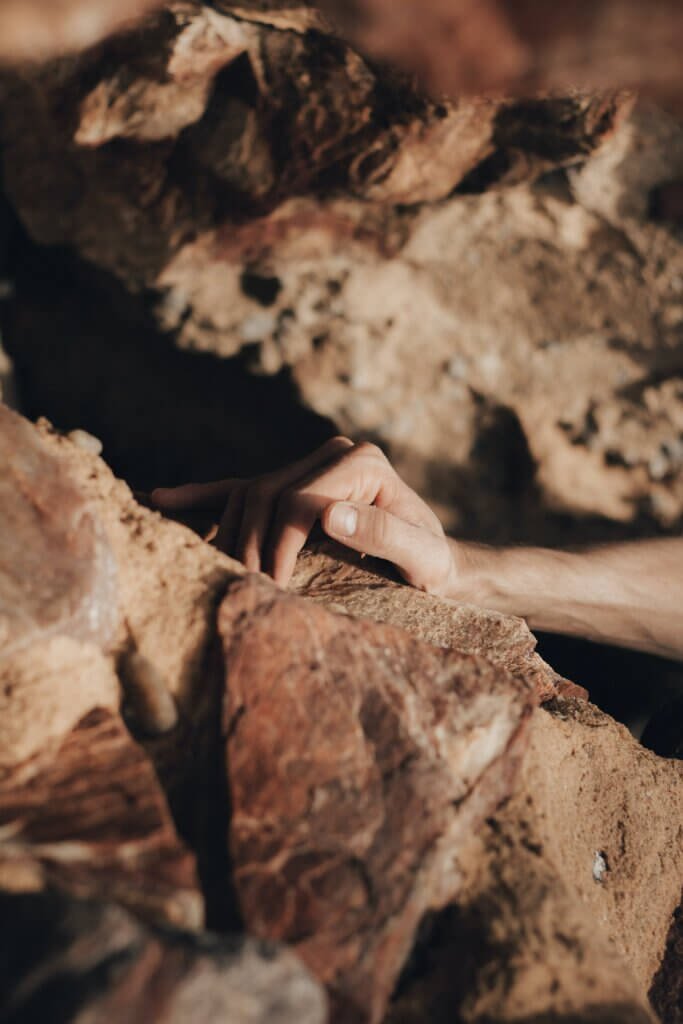
5. Strawberries
Strawberries are a delicious and popular fruit that can easily be grown in containers, making them an excellent choice for small spaces or patio gardening. There are several preferred strawberry varieties for container growing, including ‘Albion’, ‘Seascape’, and ‘Tristar’. These varieties are known for their compact growth habit and high fruit yield.
When it comes to containers for strawberries, choose ones that are at least 12 inches deep to accommodate the plants’ root systems. Ensure that the containers have drainage holes to prevent waterlogging. Strawberries prefer well-draining soil with a pH level between 5.5 and 6.5. A potting mix specifically formulated for fruits and vegetables is recommended.
Strawberries require regular watering to keep the soil consistently moist but not waterlogged. Mulching the soil surface with straw or shredded leaves can help conserve moisture and suppress weed growth. Fertilize your container-grown strawberries with a balanced, slow-release fertilizer to provide them with essential nutrients throughout the growing season.
6. Lettuce
Lettuce is a cool-season vegetable that thrives in containers, making it an excellent choice for early spring and fall gardening. There are various types of lettuce that are well-suited for container gardening, including butterhead, romaine, and loose-leaf lettuce. Consider planting a mix of different lettuce varieties to add visual interest and create a diverse salad blend.
When choosing containers for lettuce, opt for those that are at least 6 inches deep. Lettuce has a shallow root system, so it doesn’t require a large container. Use a well-draining potting mix that is rich in organic matter and has good moisture retention. Lettuce prefers cooler temperatures and partial shade, so place your containers in a location that receives morning sun and afternoon shade.
To harvest lettuce from your container garden, simply snip off the outer leaves as needed. This allows the inner leaves to continue growing, providing a continuous supply of fresh lettuce throughout the season. Lettuce is a versatile ingredient that can be enjoyed in salads, sandwiches, wraps, and more.

7. Flowers
Flowers are a beautiful addition to any container garden, providing vibrant colors and scents that enhance the overall aesthetic. There is a wide variety of popular flowering plants that are well-suited for container gardening, including petunias, marigolds, geraniums, and pansies. These flowers come in an array of colors and sizes, allowing you to create stunning displays in your containers.
When it comes to choosing containers for flowers, consider ones that complement the size and growth habit of the selected plants. Ensure that the containers have drainage holes to prevent waterlogging. Use a well-draining potting mix specifically formulated for flowers to provide the necessary nutrients and moisture retention.
Maintaining vibrant and healthy flower containers requires regular watering and fertilizing. Water your flowers consistently, keeping the soil moist but not saturated. Fertilize them with a balanced water-soluble fertilizer according to the package instructions. Deadhead spent flowers to encourage continuous blooming and remove any diseased or damaged plant parts to maintain overall plant health.
8. Cucumbers
Cucumbers are a refreshing and versatile vegetable that can be easily grown in containers, making them an excellent choice for small garden spaces or urban gardening. When selecting cucumber varieties for container gardening, choose ones that have a compact growth habit and produce smaller-sized fruits. Popular cucumber varieties for containers include ‘Bush Pickle’, ‘Spacemaster’, and ‘Patio Snacker’.
Caring for cucumber plants in containers requires providing them with the right growing conditions. Cucumbers require a sunny location that receives at least six to eight hours of direct sunlight each day. The containers should have good drainage to prevent waterlogging. Use a well-draining potting mix that is rich in organic matter and retains moisture.
Harvesting cucumber from your container plants is an exciting process. Most cucumbers can be harvested when they reach their desired size, typically around 6 to 8 inches long. Use a sharp knife or garden shears to cut the cucumbers from the plant, leaving a small section of the stem attached. Cucumbers can be enjoyed fresh in salads, sandwiches, or pickled for longer preservation.
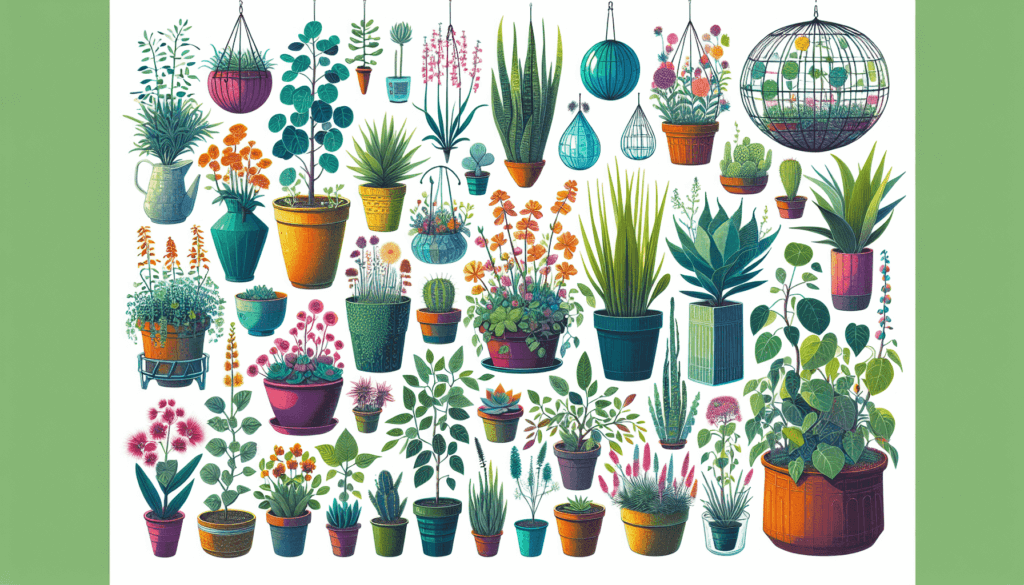
9. Carrots
Carrots are a nutritious and crunchy root vegetable that can be successfully grown in containers, allowing you to enjoy homegrown carrots even if you have limited garden space or heavy clay soil. When choosing container-friendly carrot varieties, look for ones that have a shorter maturity period and are specifically bred for container gardening, such as ‘Short ‘n Sweet’, ‘Atlas’, and ‘Paris Market’.
Container and soil requirements are important for successful carrot cultivation. Carrots require containers that are at least 12 inches deep to accommodate their long root systems. The soil should be loose, well-draining, and free from rocks or other obstructions that may hinder root growth. A potting mix specifically formulated for root vegetables is recommended.
Harvesting carrots from your container garden is a satisfying experience. Carrots can be harvested when they reach their desired size, typically around 2 to 3 inches in diameter. Gently loosen the soil around the base of the carrot and carefully pull it out. Carrots can be enjoyed fresh in salads, stir-fries, or roasted in the oven.
10. Beans
Beans are a popular vegetable that can be easily grown in containers, making them a great choice for urban gardens or gardeners with limited space. There are various bean varieties that are well-suited for container gardening, including bush beans and pole beans. Popular container-friendly bean varieties include ‘Provider’, ‘Contender’, and ‘Blue Lake’.
When growing beans in containers, consider the container and trellis requirements. Beans have a climbing habit and require vertical support for proper growth. Choose a container that is at least 12 inches deep and provides enough space for the bean plant to grow upward. Install a trellis or support system to allow the beans to climb and prevent them from sprawling.
Tips for successful bean container gardening include placing your containers in a sunny location that receives at least six to eight hours of direct sunlight each day. Keep the soil evenly moist but not waterlogged, as beans prefer consistent moisture. Fertilize your container-grown beans with a balanced, slow-release fertilizer to provide them with the necessary nutrients.
In conclusion, container gardening allows you to grow a wide variety of plants even in small spaces or unfavorable soil conditions. From succulents to vegetables, there are numerous plant options to choose from. By following the tips and guidelines provided for each category, you can create a thriving and visually appealing container garden. Happy gardening!
